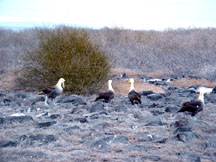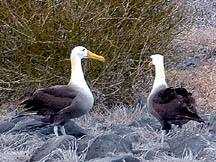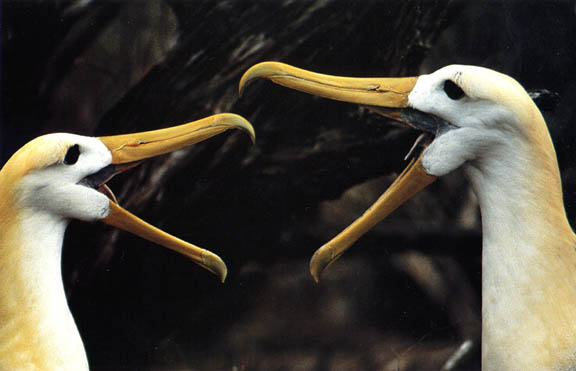|
SOME BIRDS OF GALAPAGOS: 
Day 3. Highlight of this day was the albatrosses, which had eggs and babies and were going through their mating ritual while we watched a few feet away. They shook their heads and clicked their beaks as if they were sword-fighting with one another, and bowed at the end of the dance. The wingspan of this Galapagos species is about five feet, although other related species have spans of seven feet or more. They can remain airborne for four months without touching dry land. |
|
We witnessed quite a nasty fight over nesting space between two male albatrosses. They pecked at each other with their beaks until blood was drawn and one bird was crushed (literally) and humiliated by the other. They conducted this contest while females and human beings looked on from only a couple of feet away. |
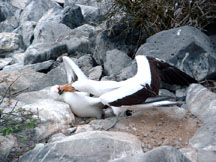 Blood has been drawn |
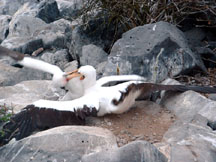 The victorious bird climbs on top |  The loser bears its neck in submission |
|
We also saw blue-footed boobies which dive to catch fish. It's a fantastic dive from about fifty feet above the water, straight down like a rocket in a power dive. They are quite large white and grey birds with bright blue feet, like something Walt Disney would have come up with. Again they take no notice whatever of curious humans. |
 Amazing blue feet of blue-footed booby |
 Blue-footed booby | 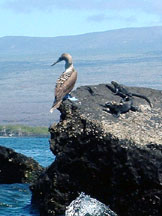 Blue-footed booby and marine iguanas |
|
Day 4: Flamingos on a lake. So colourful they were almost orange. We couldn't get very close to them because the path runs along a ridge above the lake, but they were very beautiful both in the lake and in flight. They flew in formations of about six to ten individuals. |
 Flamingo on a lake |
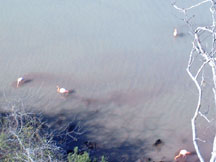 Tracks of stirred-up mud left by flamingos in the lake |  Flamingo |
|
In the afternoon of Day 4 we went to Post Office Bay, which we will tell you about in the next section. |



